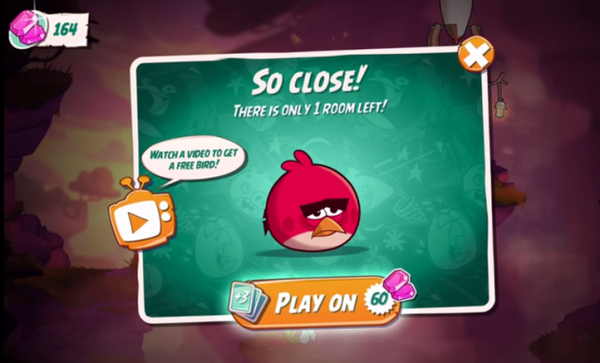Trending
Opinion: How will Project 2025 impact game developers?
The Heritage Foundation's manifesto for the possible next administration could do great harm to many, including large portions of the game development community.
It's true that incentivised video ads have a high eCPM, but they do have a dark side...

Previously an indie game developer, Nick Hatter is the founder of game-tech company, giftgaming, which monetises games through sponsored in-game gifts. His previous article, "Think twice about incentivised video ads", was featured by Gamastura.
UPDATE: I'm flattered this post got so much traction. Please visit my personal website at www.nickhatter.com for more great posts like this!
Currently incentivised video ads are a very popular way of monetising games. Next Games recently reported an 80% opt-in rate for rewarded video ads and $0.06 for ARPDAU.
This is a great achievement for them, however there is a dark side to incentivised video ads.
Here’s why:
1) Who watches?
Based on private research by giftgaming, up to 75% of players do not opt-in to watch video ads. This means there's a camp of "non-watcher and non-spender" players who game publishers are not monetising fully, which is a huge loss of potential ad revenue.
This figure will of course partially depend on how well this is implemented ie. a button in the core game loop that is simple to access will most likely have a better opt-in rate than one which is tucked away behind several menu layers.
According to Statista, the average session length for a game is 7.55 minutes. A video ad can take up to 30 seconds, and for games with shorter session lengths, it is entirely plausible players are not opting in because of the time it takes relative to the session time.
In addition, some players simply do not like video ads, particularly as they have to be held captive to receive their free currency or power-ups.

Incentivised video ad in Angry Birds 2
2) Who gets paid?
Soomla recently reported that "most of the video ad-networks are not paying for video views at all. They are paying a share of the revenue they are making which means the developer is getting paid mostly for installs that the video might be driving."
Some video ads are actually on a CPI (cost per install) basis in some cases. This is not immediately transparent, and one should exercise caution about choosing their incentivised ads partner.
3) Losing your players?
Fisku reported that publishers are paying up to $3.50 to acquire one loyal new user. Yes, just one. Therefore, game publishers could actually be wasting money via incentivised video ads by referring them to another publisher's game.
4) Restricted inventory?
Even if players are happily opting in to watch video ads, an issue is that if they are not interacting with the video ads, some game publishers will stop serving them altogether as their overall eCPM can suffer.
Publishers may be self-limiting their own revenue because of this issue.
The Alternatives
Incentivised video ads are but one tool for monetising games. And as with any tool, it has advantages (high CPMs) and disadvantages (churn, high percent of non-watchers). Game developers and publishers should use them with caution, and also offer alternative opt-in options where possible for monetising 'non-watchers', including:
- Sponsored In-Game Gifts (eg. giftgaming)
- Real-money eSports Tournaments (eg. CashPlay)
- Offer Walls (eg. TrialPay)
- Real-world Rewards (eg. Pretio)
- Incentivised Surveys (eg. Pollfish)

Sponsored in-game gifts are a way to add another revenue stream
Read more about:
BlogsYou May Also Like